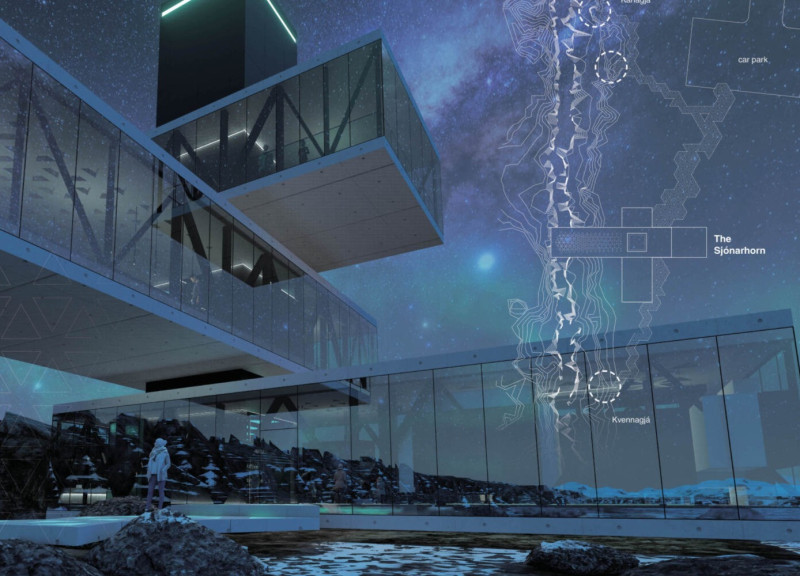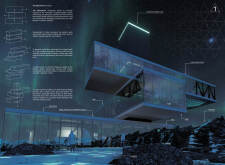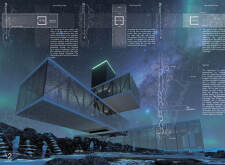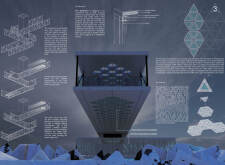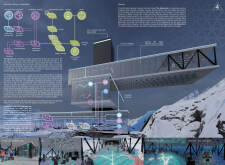5 key facts about this project
As an architectural endeavor, Sjónarhorn serves multiple functions, chiefly acting as a visitor center that offers educational opportunities and observatory spaces for the breathtaking surroundings. The building invites visitors to immerse themselves in the beauty of the landscape, providing them with vantage points that highlight the interplay of land and water, as well as phenomena such as the Northern Lights. This integration of nature with architecture encourages a deeper understanding of the environment and promotes a sense of connection between the visitors and the unique geological features of Iceland.
The design of Sjónarhorn is characterized by a central core structure crafted from dark concrete, which serves as the primary load-bearing element of the building. This core supports cantilevered forms that extend outward, creating a dynamic visual relationship with the rugged terrain. The use of locally-sourced materials not only preserves the aesthetic quality of the environment but also enhances the building's sustainability. The outer cladding consists of prefabricated concrete planks, ensuring durability while allowing for efficient construction.
An innovative application of glazed surfaces has been implemented throughout the design. The reflective qualities of the glazing create a harmonious dialogue with the surrounding landscapes, allowing the structure to merge with its environment while simultaneously providing unobstructed views for its occupants. The building's architecture utilizes transparency to draw in natural light, creating an inviting atmosphere that connects interior spaces with the exterior world. This engagement encourages occupants to appreciate the grandeur of Iceland’s nature from within the comfort of the building.
The project incorporates flexible spaces catering to various functions, including exhibition areas, café facilities, and gathering spots, thereby promoting community interaction. The design encourages movement throughout the building with open layouts that foster exploration and discovery. Visitors can easily navigate the structure, leading them to observation decks that offer panoramic views of the picturesque landscapes, including the famous Grjótagjá caves.
Unique design approaches are evident in the choice of materials and the thoughtful arrangement of spaces. Enhancing its energy efficiency, Sjónarhorn integrates geothermal heating systems and rainwater collection mechanisms, aligning with modern sustainability practices in architectural design. This attention to environmental impact not only reflects a commitment to responsible building but also enhances the overall visitor experience.
In essence, the Sjónarhorn project stands as a testament to how architecture can both serve practical purposes and embody the cultural and natural narratives of a location. It illustrates the interaction between constructed spaces and the evolving landscape, encouraging visitors to engage with their surroundings in a profound way. To fully appreciate the intricacies of this architectural project, including its plans, sections, designs, and innovative ideas, it is encouraged to explore the detailed presentation of Sjónarhorn for a comprehensive understanding of its architectural significance and the environmental considerations it entails.


